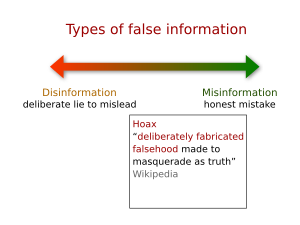Disinformation is false information deliberately spread to deceive people. It is sometimes confused with misinformation, which is false information but is not deliberate.

Black propaganda is a form of propaganda intended to create the impression that it was created by those it is supposed to discredit. Black propaganda contrasts with gray propaganda, which does not identify its source, and white propaganda, which does not disguise its origins at all. It is typically used to vilify or embarrass the enemy through misrepresentation.
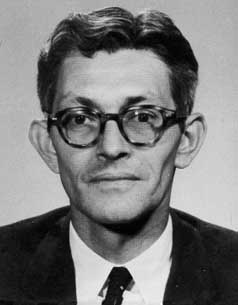
James Jesus Angleton was chief of counterintelligence for the Central Intelligence Agency (CIA) from 1954 to 1974. His official position within the organization was Associate Deputy Director of Operations for Counterintelligence (ADDOCI). Angleton was significantly involved in the US response to the purported KGB defectors Anatoliy Golitsyn and Yuri Nosenko. Angleton later became convinced the CIA harbored a high-ranking mole, and engaged in an intensive search. Whether this was a highly destructive witch hunt or appropriate caution vindicated by later moles remains a subject of intense historical debate.
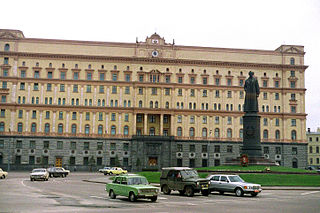
Active measures is political warfare conducted by the Soviet or Russian government since the 1920s. It includes offensive programs such as espionage, propaganda, sabotage, and assassination. The programs were based on foreign policy priorities of the Soviet Union.
Blowback is a term originating from within the Central Intelligence Agency, explaining the unintended consequence and unwanted side-effects of a covert operation. To the civilians suffering the blowback of covert operations, the effect typically manifests itself as "random" acts of political violence without a discernible, direct cause; because the public—in whose name the intelligence agency acted—are unaware of the effected secret attacks that provoked revenge (counter-attack) against them.
Anatoliy Mikhaylovich Golitsyn CBE was a Soviet KGB defector and author of two books about the long-term deception strategy of the KGB leadership. He was born in Pyriatyn, USSR. He provided "a wide range of intelligence to the CIA on the operations of most of the 'Lines' (departments) at the Helsinki and other residencies, as well as KGB methods of recruiting and running agents." He was an American citizen as late as 1984.

A false flag operation is an act committed with the intent of disguising the actual source of responsibility and pinning blame on another party. The term "false flag" originated in the 16th century as an expression meaning an intentional misrepresentation of someone's allegiance. The term was famously used to describe a ruse in naval warfare whereby a vessel flew the flag of a neutral or enemy country in order to hide its true identity. The tactic was originally used by pirates and privateers to deceive other ships into allowing them to move closer before attacking them. It later was deemed an acceptable practice during naval warfare according to international maritime laws, provided the attacking vessel displayed its true flag once an attack had begun.
As early as the 1920s, the Soviet Union, through its GRU, OGPU, NKVD, and KGB intelligence agencies, used Russian and foreign-born nationals, as well as Communists of American origin to perform espionage activities in the United States, forming various spy rings. Particularly during the 1940s, some of these espionage networks had contact with various U.S. government agencies. These Soviet espionage networks illegally transmitted confidential information to Moscow, such as information on the development of the atomic bomb. Soviet spies also participated in propaganda and disinformation operations, known as active measures, and attempted to sabotage diplomatic relationships between the U.S. and its allies.

Operation Neptune was a 1964 disinformation operation by the Czechoslovak secret service, the State Security (StB), and the Soviet Union's KGB, involving fake Nazi-era documents found in submerged chests.

Černé jezero in the Bohemian Forest is the largest and deepest natural lake in the Czech Republic.
Russian military deception, sometimes known as maskirovka, is a military doctrine developed from the start of the 20th century. The doctrine covers a broad range of measures for military deception, from camouflage to denial and deception.

Operation INFEKTION was an active measure disinformation campaign run by the KGB in the 1980s to plant the idea that the United States had invented HIV/AIDS as part of a biological weapons research project at Fort Detrick, Maryland. Historian Thomas Boghardt popularized the codename "INFEKTION" based on the claims of former East German Ministry for State Security (Stasi) officer Günter Bohnsack, who claimed that the Stasi codename for the campaign was either "INFEKTION" or perhaps also "VORWÄRTS II". However, historians Christopher Nehring and Douglas Selvage found in the former Stasi and Bulgarian State Security archives materials that prove the actual Stasi codename for the AIDS disinformation campaign was Operation DENVER. The operation involved "an extraordinary amount of effort — funding radio programs, courting journalists, distributing would-be scientific studies", according to journalist Joshua Yaffa, and even became the subject of a report by Dan Rather on the CBS Evening News.
The Interagency Active Measures Working Group was a group led by the United States Department of State and later by the United States Information Agency (USIA). The group was formed early during the Reagan administration, in 1981, as an effort to counter aggressive Soviet disinformation.
Herbert "Herb" Romerstein was an American ex-communist and historian who became a writer specializing in anticommunism and was appointed Director of the U.S. Information Agency’s Office to Counter Soviet Disinformation and Active Measures. As an author he is best known for his book The Venona Secrets.

Political warfare is the use of political means to compel an opponent to do one's will, based on hostile intent. The term political describes the calculated interaction between a government and a target audience, including another state's government, military, and/or general population. Governments use a variety of techniques to coerce certain actions, thereby gaining relative advantage over an opponent. The techniques include propaganda and psychological operations ("PsyOps"), which service national and military objectives respectively. Propaganda has many aspects and a hostile and coercive political purpose. Psychological operations are for strategic and tactical military objectives and may be intended for hostile military and civilian populations.

The 1995 CIA disinformation controversy arose when the Central Intelligence Agency revealed that between 1986 and 1994, it had delivered intelligence reports to the U.S. government based on agent reporting from confirmed or suspected Soviet operatives. From 1985 to his arrest in February 1994, CIA officer and KGB mole Aldrich Ames compromised Agency sources and operations in the Soviet Union and Eastern Europe, leading to the arrest of many CIA agents and the execution of at least ten of them. This allowed the KGB to replace the CIA agents with its own operatives or to force them to cooperate, and the double agents then funneled a mixture of disinformation and true material to U.S. intelligence. Although the CIA's Soviet-East European (SE) and Central Eurasian divisions knew or suspected the sources to be Soviet double agents, they nevertheless disseminated this "feed" material within the government. Some of these intelligence reports even reached Presidents Ronald Reagan and George H. W. Bush, as well as President-elect Bill Clinton.
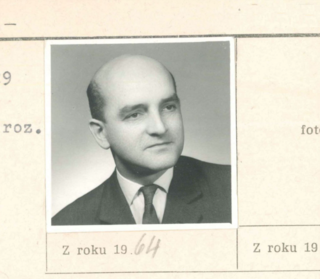
Lawrence Martin-Bittman, formerly known as Ladislav Bittman, was an American artist, author, and retired professor of disinformation at Boston University. He was best known for his 1983 book, The KGB and Soviet Disinformation: An Insider's View.
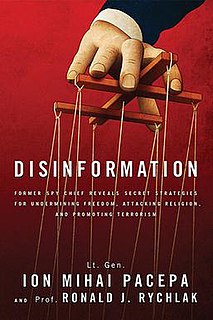
Disinformation: Former Spy Chief Reveals Secret Strategies for Undermining Freedom, Attacking Religion, and Promoting Terrorism is a 2015 non-fiction book about disinformation tactics and history rooted in information warfare. It was written by former general in the Securitate, the secret police of Socialist Republic of Romania, Ion Mihai Pacepa, and law professor Ronald J. Rychlak. It was published in 2013 along with a companion film, Disinformation: The Secret Strategy to Destroy the West.

Dezinformatsia: Active Measures in Soviet Strategy is a non-fiction book about disinformation and information warfare used by the KGB during the Soviet Union period, as part of their active measures tactics. The book was co-authored by Richard H. Shultz, professor of international politics at Tufts University, and Roy Godson, professor emeritus of government at Georgetown University.

The Plot to Hack America: How Putin's Cyberspies and WikiLeaks Tried to Steal the 2016 Election is a non-fiction book by Malcolm Nance about what the author describes as Russian interference in the 2016 United States elections. It was published in paperback, audiobook, and e-book formats in 2016 by Skyhorse Publishing. A second edition was also published the same year, and a third edition in 2017. Nance researched Russian intelligence, working as a Russian interpreter and studying KGB history.

